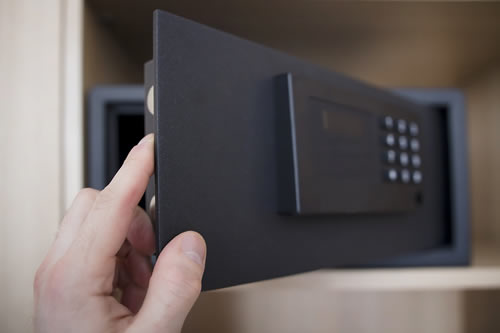Some Do's and Don'ts of Safe Maintenance and Upkeep
Some Do's and Don'ts of Safe Maintenance and Upkeep
Safes are designed to help enhance the security of our businesses and homes. So, buying and installing a safe will help protect your valuables from thieves. However, the durability of your safe depends largely on your safe maintenance routine.
For instance, adequate lubrication of the safe locks will help it last longer thereby saving you from encountering lock jamming. So what are the dos and don’ts of safe maintenance and upkeep? Here are some suggestions:
Dos: Conduct Regular Safe Maintenance Routines
Like every mechanical device, safes require basic home or office maintenance routines to function optimally. Although today’s safes do not need rigorous maintenance routines, neglecting basic protocols will affect your safe’s year to year performance.
Basic maintenance routines such as changing lock batteries, cleaning, and lubricating lock bolts and hinges, will affect the overall performance of your safe.
Don’ts: Avoid DIY
A well-used safe may require an annual maintenance schedule while a less used safe may require one after a few years. Therefore, using a DIY approach and material for advanced maintenance routines could damage your safe’s locking mechanism. Also, attempting to fix your safe’s issues without proper training and experience could create further damage. Hence, affecting your safe’s functionality.
Locksmith service providers like QuickPro Locksmith have the training, tools, and skill sets required to carry out advanced safe maintenance protocols and safe unlocking services. Many safe part’s are difficult to access without the right tools and impossible to access without the right skills. Contact us to book a safe maintenance appointment.
Dos: Inspect Your Safe’s Surrounding
Your maintenance routine should also affect your safe’s surroundings. The functionality and durability of every safe could be affected to some extent by its surroundings.
For instance, a dirty surrounding would expose your safe’s lock mechanism to dust and debris. Hence, preventing your safe’s door and locking mechanism from functioning properly. In a dirty surrounding, dust and debris would easily find their way into your safe’s bolt, lock, dial, and door hinges.
Don’ts: Avoid Overlooking Your Safe’s Warning Signals
Pay attention to your safe. Study how your safe works over time. If you notice any sign of trouble (no matter how small), contact a locksmith immediately. Small warning signs are easy to fix and neglecting them could later cause a whole lot of issues with your safe.
Most complex safe’s dysfunctions start small and neglecting the warning signals often leads to more catastrophic issues.
Dos: Consider a Security Upgrade
Keeping up with safes security trends would give you a perfect idea on how to get the most out of your safe. Hence, keeping you informed about innovative ways to upgrade your safe’s security. If you have no idea about how you could upgrade the security of your safe, contact your locksmith for assessment and recommendations.
Final Thoughts
QuickPro Locksmith has a team of well-trained and experienced locksmiths who have the skill sets required to address your safe’s needs. Need help? Contact us for safe security services such as safe unlocking, key copying, maintenance schedules, and more.

